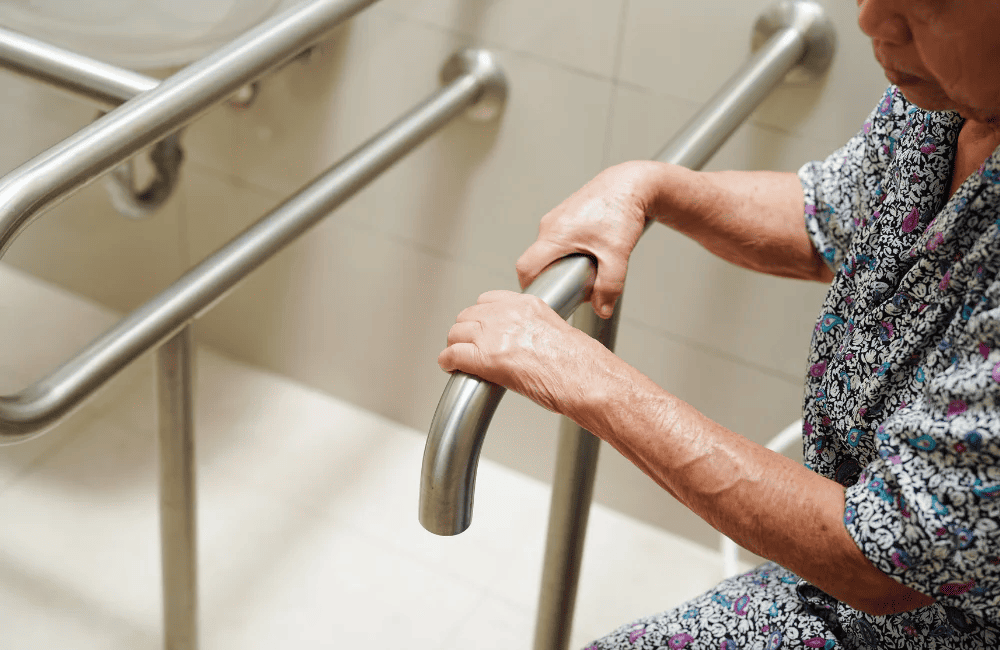Weakness in the legs among older adults is a common health issue that significantly impacts quality of life. Affected individuals face a heightened risk of falls, mobility limitations, and even becoming bedridden. This symptom should not be overlooked, as it may be a warning sign of serious underlying health conditions that require prompt diagnosis and treatment. SECOM presents some essential insights and care strategies to help protect the ones you love.
Common Causes of Leg Weakness in the Elderly
- Leg weakness can stem from age-related deterioration or a variety of medical conditions,
- Sarcopenia: Age-induced loss of muscle mass, especially when compounded by physical inactivity, leads to weakness and impaired movement.
- Stroke: Sudden weakening on one side of the body, including the leg, may indicate a stroke and requires immediate medical attention—ideally within 4.5 hours to reduce the risk of permanent disability.
- Herniated Disc: A slipped spinal disc pressing on nerves can cause radiating pain, numbness, and leg weakness.
- Spondylosis: Degenerative changes in the spine can narrow nerve pathways, resulting in weakness and walking difficulties.
- Diabetes: Long-standing diabetes can cause peripheral neuropathy, leading to leg numbness and weakness.
- Malnutrition: Deficiencies in essential vitamins like B12 or vitamin D may impair muscle strength and nerve function.
- 3. Potential Health Risks Linked to Leg Weakness
- Leg weakness in older adults may signal deeper health problems with serious consequences, such as:
- Stroke: Sudden one-sided leg weakness may be a stroke indicator—requiring urgent intervention.
- Muscle Atrophy: Without proper rehabilitation, muscle wasting can worsen, hindering mobility and raising fall risk.
- Osteoporosis and Fractures: Weak legs combined with brittle bones elevate the risk of falls and hip fractures, deeply impacting well-being.
- Becoming Bedridden: Prolonged mobility issues may lead to complete loss of independence.
Treatment Approaches

A diagnosis of the underlying cause is essential before proceeding with treatment
- Medication:
- Anti-inflammatories for nerve inflammation
- Blood pressure medications to mitigate stroke risk
- Blood sugar management for diabetic neuropathy
- Supplements like vitamin B12, vitamin D, and calcium for nerve and muscle support
- Physical Therapy:
- Strengthens leg muscles
- Enhances flexibility and range of motion
- Improves balance to reduce fall risk
- Teaches proper walking and movement patterns
- Surgery:
- Considered in severe cases, such as advanced spinal degeneration or nerve compression; evaluated on the basis of the patient’s age, condition, and overall health.
Preventive Measures
Maintaining leg strength in older adults involves holistic health practices:
Sufficient Rest and Sleep: Crucial for muscle recovery and nerve health. Older adults should strive for 7–8 hours of quality sleep nightly, establish consistent sleep routines, optimize their sleep environment, and seek medical advice if sleep disturbances persist.
Adequate Daily Protein Intake: Vital for muscle maintenance and repair. Recommended sources include lean meats (fish, chicken), dairy products (milk, yogurt), tofu, legumes, and seeds. Aim for approximately 1–1.2 g of protein per kilogram of body weight daily.
Regular Physical Exercise: Resistance-based activities are particularly effective. Suitable options include brisk walking (30 minutes daily), water-based exercises, gentle yoga or tai chi, and light resistance training.
Importance of Early Diagnosis and Home Safety

If an elderly family member experiences leg weakness, early medical evaluation is critical to identify the cause and determine the appropriate treatment. It’s equally important to modify the living environment—installing handrails, removing trip hazards, improving lighting, and using mobility aids—to prevent accidents.
SECOM offers the Smart Security Care service—an intelligent system designed to keep seniors safe. Features include real-time mobile alerts, daily routine monitoring, ambulance call coordination, and 24/7 professional support. This integrated service ensures families feel reassured even when seniors are at home alone.


